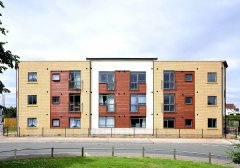Jun 25 2009
Ecological and economic factors are prompting telecommunications companies to deploy energy-saving systems. The broadband DSL access network consumes about 20 billion kilowatt-hours of energy per year worldwide – equivalent to four percent of Germany's annual energy consumption. The use of a low-power mode (L2 mode) in standard ADSL2/ADSL2+ systems could significantly reduce the amount of electricity consumed by the DSL network. At present, broadband access always runs on full power, but the L2 mode could reduce the transmission output of the system and therefore its power usage during quiescent communication. Although the mode has already been standardized and is present in many devices on the customer and network side, it is not being used. The problem is that L2 mode causes considerable interference to neighboring DSL systems.
 Against the background of climate change, how can xDSL systems function more energy-efficiently and cost-effectively
Against the background of climate change, how can xDSL systems function more energy-efficiently and cost-effectively
When a modem connects to the Internet while neighboring modems are still in L2 mode, only a small degree of interference occurs and the data transmission rate is high. If, however, systems in neighboring houses or apartments become active, the interference to the first system is so great that the connection crashes and the modem can only go online again after a prolonged restart phase. What's more, the data speed is significantly lower. For this reason, the operators of broadband networks deactivated the low-power mode and did not include it in the standardization for future broadband connections with faster data transmission rates (VDSL).
Scientists at the Fraunhofer Institute for Communication Systems ESK have now succeeded in using artificial or virtual noise to stabilize DSL connections so that L2 mode can be deployed. The artificial noise simulates typical cable bundle interference to the broadband receivers. When a modem tries to connect to the Internet, the system registers normal interference even if the device next door is in low-power mode. Although the connection does not take place at the highest-possible transmission rate but at a slightly reduced speed, it remains stable when a neighbor goes online. Both the L2 mode and artificial noise can be used now. Network operators could reduce their electricity consumption by several million kilowatt-hours per year, which in Germany alone would mean an annual saving of 15 million euros on operating costs. At first, however, only the network operators would save money, not the users.